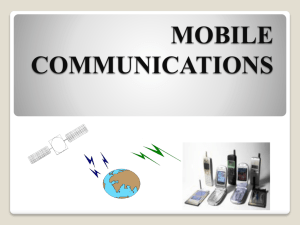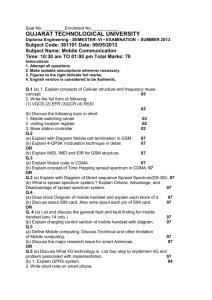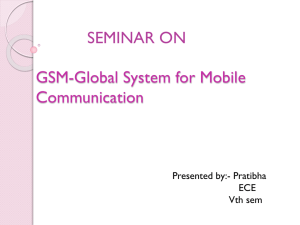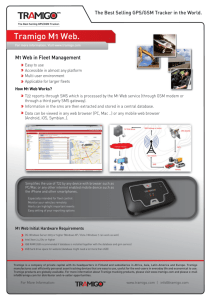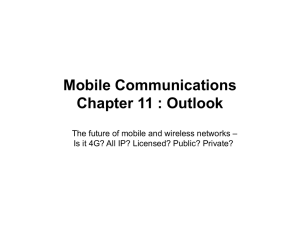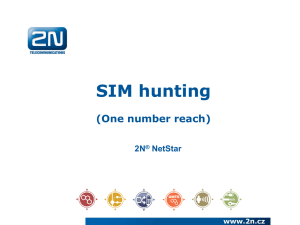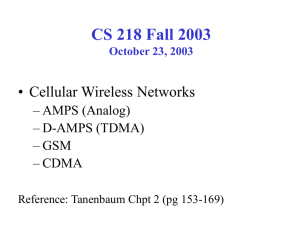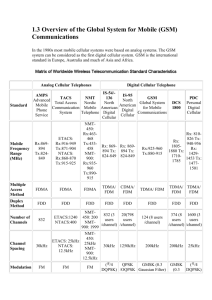Mobile & Wireless Computing Tutorial: GSM, CDM, Data Rates
advertisement
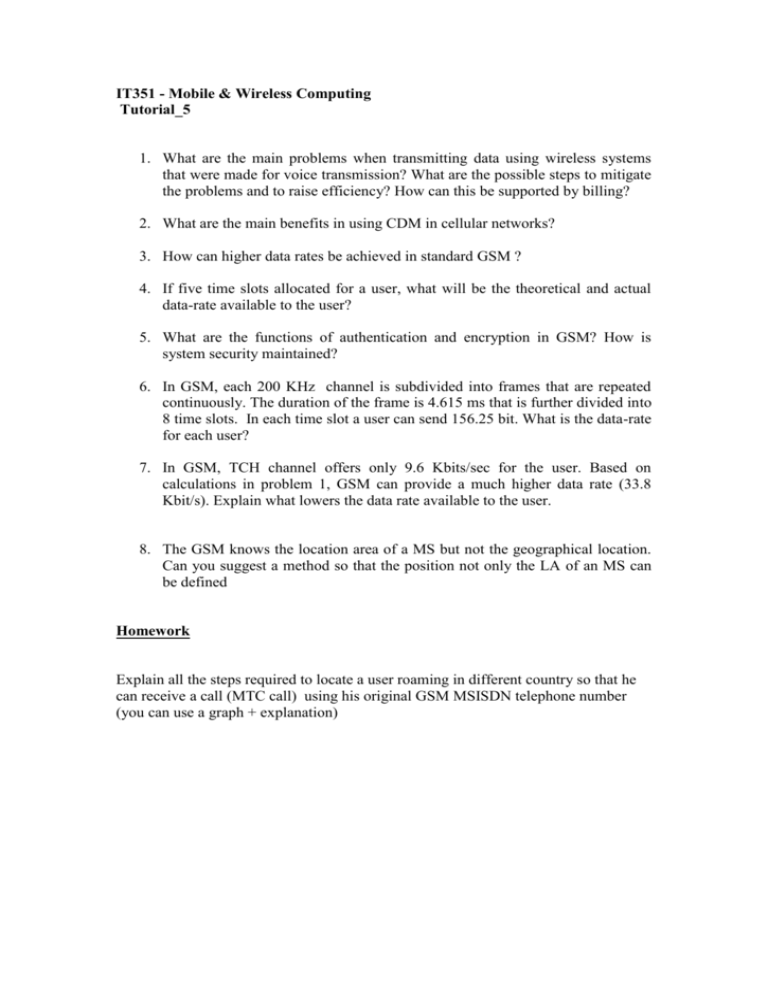
IT351 - Mobile & Wireless Computing Tutorial_5 1. What are the main problems when transmitting data using wireless systems that were made for voice transmission? What are the possible steps to mitigate the problems and to raise efficiency? How can this be supported by billing? 2. What are the main benefits in using CDM in cellular networks? 3. How can higher data rates be achieved in standard GSM ? 4. If five time slots allocated for a user, what will be the theoretical and actual data-rate available to the user? 5. What are the functions of authentication and encryption in GSM? How is system security maintained? 6. In GSM, each 200 KHz channel is subdivided into frames that are repeated continuously. The duration of the frame is 4.615 ms that is further divided into 8 time slots. In each time slot a user can send 156.25 bit. What is the data-rate for each user? 7. In GSM, TCH channel offers only 9.6 Kbits/sec for the user. Based on calculations in problem 1, GSM can provide a much higher data rate (33.8 Kbit/s). Explain what lowers the data rate available to the user. 8. The GSM knows the location area of a MS but not the geographical location. Can you suggest a method so that the position not only the LA of an MS can be defined Homework Explain all the steps required to locate a user roaming in different country so that he can receive a call (MTC call) using his original GSM MSISDN telephone number (you can use a graph + explanation) Answers 1) Systems optimised for voice transmission support certain fixed data rates and operate circuit switched. Data transmission happens quite often spontaneous with varying data rates. Thus either too much bandwidth is reserved to accommodate the maximum expected data rate or data transmission experiences long delays due to connection setup. One possible step towards the support of data transmission is the introduction of packet switched services as known from the Internet. An example is GPRS in GSM. Instead of timebased billing providers can now bill based on volume. 2) - It can accommodate more users per MHz of bandwidth than any other technology ( 3 to 5 times more than GSM). - - CDMA has no built-in limit to the number of concurrent users. CDMA do not limit the distance a tower can cover. CDMA consumes less power and covers large areas so cell size in CDMA is larger. CDMA is able to produce a reasonable call with lower signal (cell phone reception) levels. CDMA uses Soft Handoff, reducing the likelihood of dropped calls. CDMA's variable rate voice coders reduce the rate being transmitted when speaker is not talking, which allows the channel to be packed more efficiently. Has a well-defined path to higher data rates. 3) The classical data rate of GSM is 9.6 kbit/s. Using less forward error correction (FEC) 14.4 kbit/s are available, too. These data rates are achievable using a single time-slot per frame in a certain channel. 4) Theoretical data rate = 33.85 *5 = 169.2 Kbit/s Actual data-rate = 9.6 *5 = 48 Kbit/s 5) The first step is the authentication of the user against the SIM. This is done using a simple PIN. Then, the SIM authenticates itself against the GSM system. This second authentication is much stronger compared to the PIN. This is because the operator is not really interested in who is using the system as long as it is a valid and paying customer. Authentication with the system uses a challenge response scheme with a shared secret on the SIM and in the AuC. Neither the SIM nor the AuC will transmit this secret over the air or reveal it to customers. Encryption only takes places between the MS and the BSS. GSM does not provide strong encryption end-to-end or MS to the gateway into the fixed network. System designers decided for over-the-air encryption only as they thought that the system itself is trustworthy. Thus, authentication of base stations against MSs was neglected, too. This opened ways to fake base stations. 6) In each 4.615 ms the user sends 156.25 bit In 1 sec the user send 156.25/(4.615*10-3) = 33.85Kbit Data-rate for each user = 33.85Kbit/sec 7) The user sends his data + the forward error correction (FEC) to mitigate transmission errors. Furthermore, bandwidth is needed for signalling, guard spaces. 8) Localisation could be terminal assisted: the terminal could gather the current signal strength from all surrounding base stations. Furthermore, using the time of arrival helps calculating the distance. Reflection and attenuation makes the calculation more difficult.

